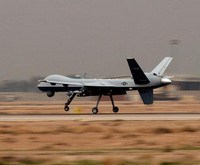The debate about U.S. targeted killing policy has become repetitive and familiar. The policy’s proponents argue that the precision and accuracy of drones keep civilian casualties to a minimum, and that drones are the most viable tool in fighting an asymmetric war, particularly in places that are off-limits to U.S. troops. Opponents of drone strikes argue that civilian casualties are much higher than U.S. government estimates, and that the policy is counterproductive because it leads to the radicalization of a new generation of terrorists.
The number of civilian casualties from drone strikes is perhaps the most complicated of these questions, and at first glance, it may appear that there is no way to reconcile the wildly differing estimates of civilian deaths. But a closer look at the publicly available data reveals a potentially useful zone of overlap.
The range of public estimates of civilian deaths from drone strikes, at the low end, includes the June 2011 statement by then-White House counterterrorism adviser John Brennan that there had not been “a single collateral death” in the preceding year resulting from American drone strikes. At the other extreme, the Bureau of Investigative Journalism (BIJ), a London-based nonprofit organization, puts the number of deaths between 84 and 193 in 2010, and between 52 and 146 in 2011. The Pakistani government has claimed as many as 400 to 600 civilian casualties during an investigation by U.N. Special Rapporteur Ben Emmerson, and as few as 67 in a recent statement from its Defense Ministry. Human rights and advocacy organizations based in Pakistan and Yemen have also put forth varying estimates.

